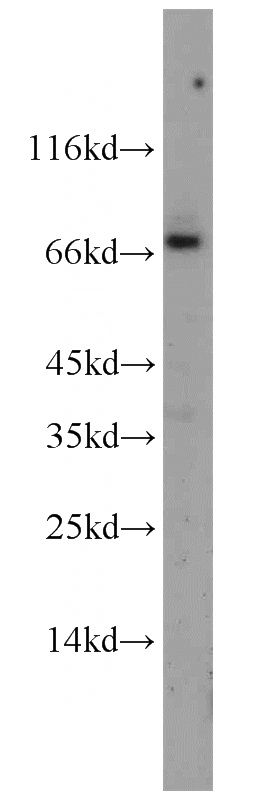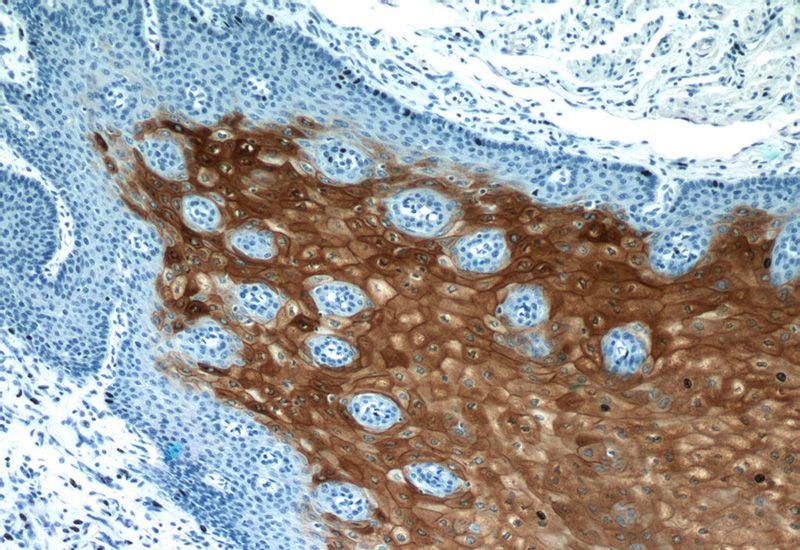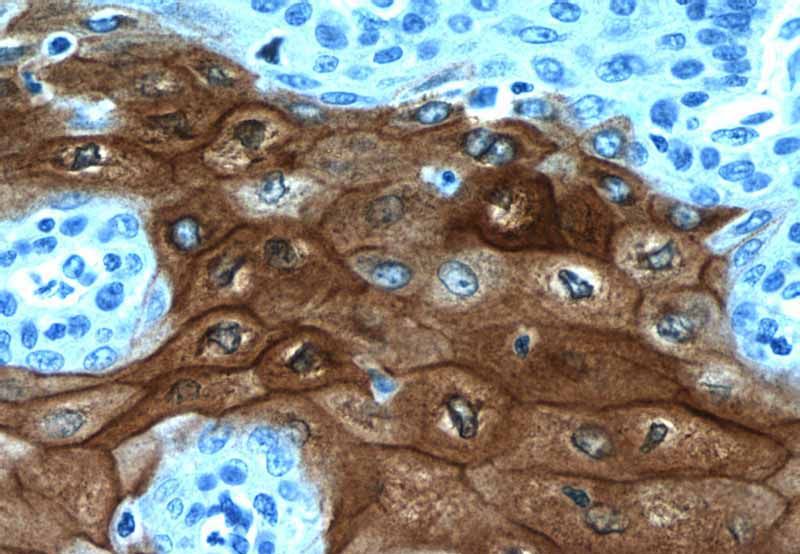-
Product Name
CRNN antibody
- Documents
-
Description
CRNN Rabbit Polyclonal antibody. Positive IHC detected in human oesophagus tissue, human cervical cancer tissue, human skin tissue. Positive WB detected in mouse brain tissue, HepG2 cells. Observed molecular weight by Western-blot: 70 kDa, 58 kDa
-
Tested applications
ELISA, WB, IHC
-
Species reactivity
Human, Mouse; other species not tested.
-
Alternative names
58 kDa heat shOCk protein antibody; C1orf10 antibody; cornulin antibody; CRNN antibody; DRC1 antibody; PDRC1 antibody; SEP53 antibody; Tumor related protein antibody
-
Isotype
Rabbit IgG
-
Preparation
This antibody was obtained by immunization of CRNN recombinant protein (Accession Number: NM_016190). Purification method: Antigen affinity purified.
-
Clonality
Polyclonal
-
Formulation
PBS with 0.1% sodium azide and 50% glycerol pH 7.3.
-
Storage instructions
Store at -20℃. DO NOT ALIQUOT
-
Applications
Recommended Dilution:
WB: 1:200-1:1000
IHC: 1:20-1:200
-
Validations

mouse brain tissue were subjected to SDS PAGE followed by western blot with Catalog No:109575(CRNN antibody) at dilution of 1:300

Immunohistochemistry of paraffin-embedded human oesophagus tissue slide using Catalog No:109575(CRNN Antibody) at dilution of 1:200 (under 10x lens). Heat mediated antigen retrieved with Citric acid buffer, pH6.0

Immunohistochemistry of paraffin-embedded human oesophagus tissue slide using Catalog No:109575(CRNN Antibody) at dilution of 1:200 (under 40x lens). Heat mediated antigen retrieved with Citric acid buffer, pH6.0
-
Background
Cornulin, also known as C1orf10, is a member of the "fused gene" family of proteins, which contain N-terminus EF-hand domains and multiple tandem peptide repeats. It may play a role in the mucosal/epithelial immune response and epidermal differentiation. Specific to squamous epithelia cells, cornulin is expressed in esophagus, primary keratinocytes, scalp skin, foreskin, cervix, larynx, and fetal bladder. It may be a marker of late epidermal differentiation, and is down-regulated in eczema.
-
References
- Katada K, Tomonaga T, Satoh M. Plectin promotes migration and invasion of cancer cells and is a novel prognostic marker for head and neck squamous cell carcinoma. Journal of proteomics. 75(6):1803-15. 2012.
- Hsu PK, Kao HL, Chen HY. Loss of CRNN expression is associated with advanced tumor stage and poor survival in patients with esophageal squamous cell carcinoma. The Journal of thoracic and cardiovascular surgery. 147(5):1612-1618.e4. 2014.
- Salahshourifar I, Vincent-Chong VK, Chang HY. Downregulation of CRNN gene and genomic instability at 1q21.3 in oral squamous cell carcinoma. Clinical oral investigations. 19(9):2273-83. 2015.
Related Products / Services
Please note: All products are "FOR RESEARCH USE ONLY AND ARE NOT INTENDED FOR DIAGNOSTIC OR THERAPEUTIC USE"
